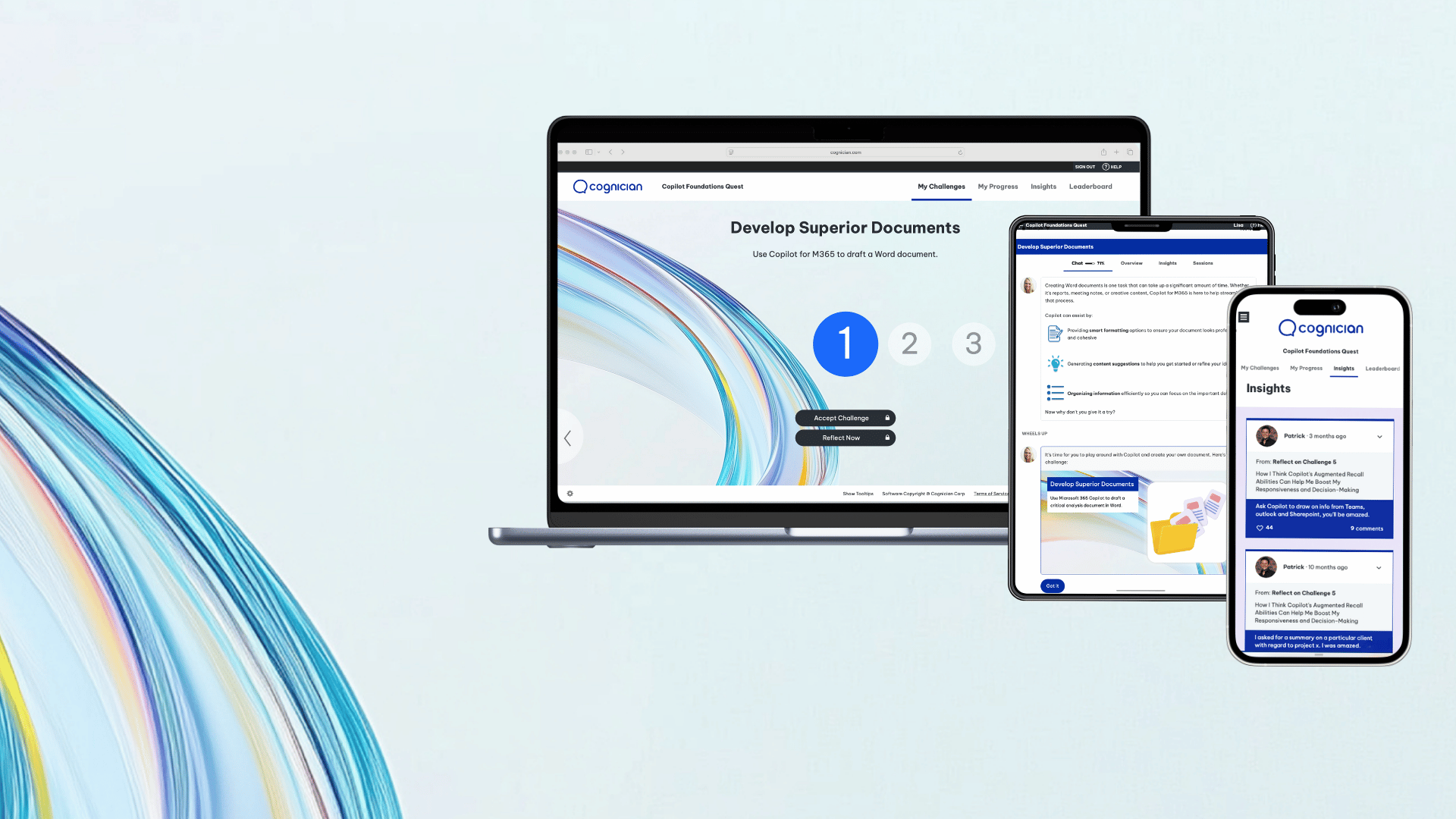See how we use storytelling in our Gemini Foundations Quest to make learning memorable, inspire participants to adopt new skills, and drive real change at work.
Remember the stories you were told as a child? They weren't just entertaining – they helped you make sense of the world. Characters, conflicts, and resolutions stuck with you long after the book was closed because stories are one of the most powerful tools for learning. They capture our attention and imagination, making lessons easier to understand, remember, and apply – and not just for kids.
When we read or listen to stories, we naturally visualize the scenes, which helps us internalize key ideas. A fable like The Boy Who Cried Wolf teaches the value of honesty through example, not instruction. In the same way, well-chosen stories and case studies can bring complex or abstract concepts to life, especially during times of change.
That's why we use storytelling as a Transformation Tactic in our programs – including our Gemini Foundations Quest – to create learning experiences that are emotionally engaging, cognitively sticky, and practically useful. Let's explore how that works in practice.
Why Storytelling Drives Change
When you want people to adopt new behaviors, information alone isn't enough. People need to connect to the change, see themselves in it, and understand why it matters. That's where stories come in.
By using storytelling strategically, we:
- Make abstract concepts more concrete
- Trigger emotional engagement
- Help people visualize new ways of working
- Increase the likelihood that lessons will be remembered – and acted on
One of the key Transformation Tactics we use is called Use Stories. It activates change by showing – not just telling – what's possible.
Case in Point: How the Gemini Foundations Quest Uses Storytelling
In our Gemini Foundations Quest, we introduce a real-world story from Lego's history to illustrate the value of research – and show how Gemini can support research in your day-to-day work. Here's how we do it.1. Share a Real-World Story That Shows What's Possible
The program begins with a powerful example from Lego's history. In the early 2000s, Lego discovered that only 9% of its users were girls. Instead of making assumptions, they invested in four years of research to understand what girls actually wanted from play. The result was the launch of Lego Friends – a redesigned product line that led to a sharp increase in popularity with girls and helped grow the market for girls' construction toys from $300M to $900M.
This story is more than a case study. It shows program participants what research can unlock – and it primes them to approach their own work with the same mindset.
2. Connect the Story to the Participant's Context
We then use the story as a springboard to ask participants to reflect on their own work:
"With this story in mind, is there something at work you think could benefit from more thorough research?"
This bridges the story to the participant's reality by encouraging them to see the relevance of research in their own roles – priming them to approach their next challenge with a research mindset.
3. Activate Change Through Challenge and Application
Participants are then challenged to use Gemini to explore a research topic relevant to their work. The story becomes both inspiration and a model.
Just as Lego used research to uncover insights, participants are invited to use Gemini to find relevant sources, summarize key information, and iterate on their thinking.
4. Reflect and Iterate
Finally, participants reflect on the process: How did using Gemini for research help them? What did they learn? How might they apply these insights going forward?
This reflection reinforces the lesson from the Lego story: that persistence, curiosity, and a willingness to experiment can lead to meaningful change.
From Story to Shift
This structured use of storytelling is just one example of how we activate behavior change in our programs. When learning is tied to emotionally resonant, real-world stories, it's more than memorable – it's transformational.If you're looking to embed new skills and inspire lasting change in your organization, consider the power of storytelling. It’s not just a way to deliver information – it's a way to activate behavior change and spark meaningful transformation.



.png)

